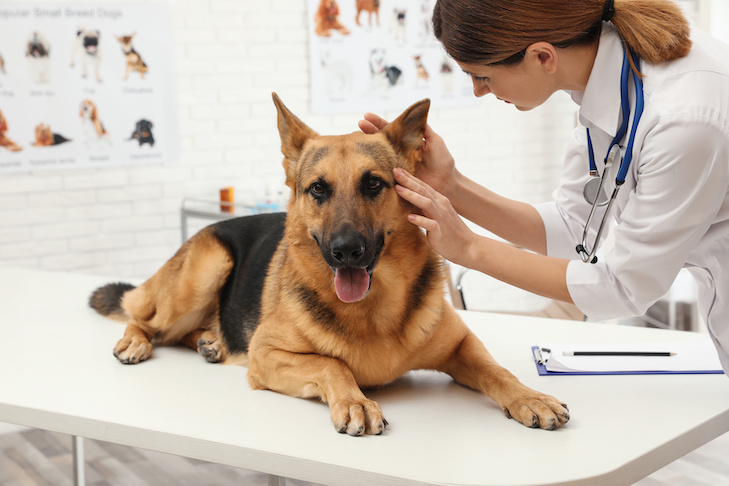Diarrhea in dogs is one of the most common reasons for owners to see their pet at a veterinarian.
But does every case of diarrhea guarantee a trip to the veterinary clinic?
If your pet is still eating, drinking and looking overall bright, alert and healthy and diarrhea is very rare, you can try to feed flat food (e.g., chicken and rice).
If diarrhea persists for more than 12 to 24 hours or increases in frequency, schedule an appointment with your veterinarian as quickly as possible.

When is Diarrhea in dogs considered to be serious?
However, if your pet has frequent jelly-like diarrhea, vomiting, and is weak or lethargic, your pet may be suffering from hemorrhagic gastroenteritis (HGE) and should see a veterinarian immediately.
Do not wait until the next available appointment.
Also Read: How to Make the Dog Crate More Comfortable: Dogclub.online
HGE is a rapidly dehydrating form of diarrhea, characterized by jelly-like diarrhea that contains large amounts of red or black blood.
Pets with HGE can become seriously ill within 12 hours. Sometimes dogs with HGE go into shock or die.
How common is HGE or Diarrhea in Dogs?
HGE generally affects dogs more than cats. All dogs, regardless of size, breed and age, develop HGE. Smaller dogs are more likely to have this condition.
Dogs with a sensitive stomach history may experience more HGE than others. HGE is usually caused by dietary discretion or a different diet or treatment.
HGE usually occurs after dogs have eaten human food that is high in fat and/or additives, but can also occur in dogs that eat a high-fat doggie treat or eat large amounts of food.
Dogs with sensitive stomachs develop HGE after a rapid diet change in the new dog diet. Veterinary clinics see more cases of HGE during the holidays, visiting all the extra human feasts and friends and family who have the opportunity to feed your pet scraps off the table.
Dogs that enter a trash can or attack leftovers are at risk of developing HGE. Often, the exact cause of HGE may not be known.
When does HGE occur?
Diarrhea in Dogs usually occurs anywhere from 12 to 24 hours after a food allergy. Initially, your pet may become tired, skip meals and vomit, and develop bloody diarrhea later. All of these symptoms occur within hours of each other.
How is HGE diagnosed and treated?
Your veterinarian can easily diagnose HGE with a simple blood test called a PCV (packed cell volume) or hematocrit. PCV greater than 55% with low to normal protein count is generally considered a diagnosis of HGE.
Typical PCV values for a dog range from 37% to 55%. Other diseases such as parvovirus, pancreatitis and foreign objects trapped in the GI tract can cause HGE-like symptoms.
In addition to HGE diagnosis, your veterinarian may perform other blood tests, x-rays, and stool tests to rule out these other serious illnesses.
The exact cause of HGE is not known but can be caused by a bacterium called Clostridium perfringens or its enterotoxins.
These bacteria are often present in pets and coexist without any problems. HGE also occurs with pancreatitis, the cause or consequence of inflammation of the pancreas.
A dog with HGE almost always needs to be hospitalized for at least 24 hours.
Large amounts of fluid are given through the IV catheter and antibiotic and anti-nausea medications such as ampicillin or metronidazole are given.
PCV is monitored during fluid therapy such as electrolyte levels and protein levels.
With aggressive treatment, the result is generally good, as most dogs with HGE recover fully.
While HGE is usually an isolated event and may recur in the future, it is best prevented by monitoring your dog’s access to human foods, garbage, and new doggie dinners.
